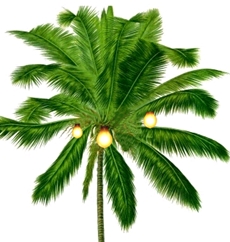Trees used to create recyclable, efficient solar cell
28 Mar 2013
Georgia Institute of Technology and Purdue University researchers have developed efficient solar cells using natural substrates derived from plants such as trees. Just as importantly, by fabricating them on cellulose nanocrystal (CNC) substrates, the solar cells can be quickly recycled in water at the end of their lifecycle.
 The technology is published in the journal Scientific Reports, the latest open-access journal from the Nature Publishing Group.
The technology is published in the journal Scientific Reports, the latest open-access journal from the Nature Publishing Group.
The researchers report that the organic solar cells reach a power conversion efficiency of 2.7 per cent, an unprecedented figure for cells on substrates derived from renewable raw materials.
The CNC substrates on which the solar cells are fabricated are optically transparent, enabling light to pass through them before being absorbed by a very thin layer of an organic semiconductor.
During the recycling process, the solar cells are simply immersed in water at room temperature. Within only minutes, the CNC substrate dissolves and the solar cell can be separated easily into its major components.
Georgia Tech College of Engineering Professor Bernard Kippelen led the study and says his team's project opens the door for a truly recyclable, sustainable and renewable solar cell technology.
''The development and performance of organic substrates in solar technology continues to improve, providing engineers with a good indication of future applications,'' says Kippelen, who is also the director of Georgia Tech's Center for Organic Photonics and Electronics (COPE). ''But organic solar cells must be recyclable. Otherwise we are simply solving one problem, less dependence on fossil fuels, while creating another, a technology that produces energy from renewable sources but is not disposable at the end of its lifecycle.''
To date, organic solar cells have been typically fabricated on glass or plastic. Neither is easily recyclable, and petroleum-based substrates are not very eco-friendly. For instance, if cells fabricated on glass were to break during manufacturing or installation, the useless materials would be difficult to dispose of.
Paper substrates are better for the environment, but have shown limited performance because of high surface roughness or porosity. However, cellulose nanomaterials made from wood are green, renewable and sustainable. The substrates have a low surface roughness of only about two nanometers.
''Our next steps will be to work toward improving the power conversion efficiency over 10 percent, levels similar to solar cells fabricated on glass or petroleum-based substrates,'' said Kippelen. The group plans to achieve this by optimizing the optical properties of the solar cell's electrode.
Purdue School of Materials Engineering associate professor Jeffrey Youngblood collaborated with Kippelen on the research.
A provisional patent on the technology has been filed with the U.S. Patent Office.






























